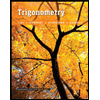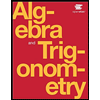**Problem Statement** For \( f(x) = 5 \) and \( g(x) = 3x^2 + 2 \), find the domains and ranges of \( f \), \( g \), and the functions \( \frac{f}{g} \) and \( \frac{g}{f} \). --- **Solution Explanation** 1. **Function \( f(x) = 5 \)** - **Domain of \( f \)**: The function \( f(x) = 5 \) is a constant function. Its domain is all real numbers, denoted as \( (-\infty, \infty) \). - **Range of \( f \)**: Since \( f(x) \) is constant, its range is \( \{5\} \). 2. **Function \( g(x) = 3x^2 + 2 \)** - **Domain of \( g \)**: The function \( g(x) = 3x^2 + 2 \) is a polynomial, which has a domain of all real numbers, \( (-\infty, \infty) \). - **Range of \( g \)**: Since \( g(x) \) is a parabola opening upwards with vertex at its minimum point, the range is \([2, \infty)\). 3. **Function \( \frac{f}{g} = \frac{5}{3x^2 + 2} \)** - **Domain of \( \frac{f}{g} \)**: The denominator \( g(x) = 3x^2 + 2 \) is never zero for real numbers. Therefore, the domain is \( (-\infty, \infty) \). - **Range of \( \frac{f}{g} \)**: Since \( g(x) \geq 2 \), the expression \( \frac{5}{3x^2 + 2} \) will attain values from \((0, \frac{5}{2}]\). 4. **Function \( \frac{g}{f} = \frac{3x^2 + 2}{5} \)** - **Domain of \( \frac{g}{f} \)**: The domain is all real numbers, similar to \( g(x) \), since the denominator \( f(x) \) is simply
**Problem Statement** For \( f(x) = 5 \) and \( g(x) = 3x^2 + 2 \), find the domains and ranges of \( f \), \( g \), and the functions \( \frac{f}{g} \) and \( \frac{g}{f} \). --- **Solution Explanation** 1. **Function \( f(x) = 5 \)** - **Domain of \( f \)**: The function \( f(x) = 5 \) is a constant function. Its domain is all real numbers, denoted as \( (-\infty, \infty) \). - **Range of \( f \)**: Since \( f(x) \) is constant, its range is \( \{5\} \). 2. **Function \( g(x) = 3x^2 + 2 \)** - **Domain of \( g \)**: The function \( g(x) = 3x^2 + 2 \) is a polynomial, which has a domain of all real numbers, \( (-\infty, \infty) \). - **Range of \( g \)**: Since \( g(x) \) is a parabola opening upwards with vertex at its minimum point, the range is \([2, \infty)\). 3. **Function \( \frac{f}{g} = \frac{5}{3x^2 + 2} \)** - **Domain of \( \frac{f}{g} \)**: The denominator \( g(x) = 3x^2 + 2 \) is never zero for real numbers. Therefore, the domain is \( (-\infty, \infty) \). - **Range of \( \frac{f}{g} \)**: Since \( g(x) \geq 2 \), the expression \( \frac{5}{3x^2 + 2} \) will attain values from \((0, \frac{5}{2}]\). 4. **Function \( \frac{g}{f} = \frac{3x^2 + 2}{5} \)** - **Domain of \( \frac{g}{f} \)**: The domain is all real numbers, similar to \( g(x) \), since the denominator \( f(x) \) is simply
Trigonometry (11th Edition)
11th Edition
ISBN:9780134217437
Author:Margaret L. Lial, John Hornsby, David I. Schneider, Callie Daniels
Publisher:Margaret L. Lial, John Hornsby, David I. Schneider, Callie Daniels
Chapter1: Trigonometric Functions
Section: Chapter Questions
Problem 1RE:
1. Give the measures of the complement and the supplement of an angle measuring 35°.
Related questions
Question
![**Problem Statement**
For \( f(x) = 5 \) and \( g(x) = 3x^2 + 2 \), find the domains and ranges of \( f \), \( g \), and the functions \( \frac{f}{g} \) and \( \frac{g}{f} \).
---
**Solution Explanation**
1. **Function \( f(x) = 5 \)**
- **Domain of \( f \)**: The function \( f(x) = 5 \) is a constant function. Its domain is all real numbers, denoted as \( (-\infty, \infty) \).
- **Range of \( f \)**: Since \( f(x) \) is constant, its range is \( \{5\} \).
2. **Function \( g(x) = 3x^2 + 2 \)**
- **Domain of \( g \)**: The function \( g(x) = 3x^2 + 2 \) is a polynomial, which has a domain of all real numbers, \( (-\infty, \infty) \).
- **Range of \( g \)**: Since \( g(x) \) is a parabola opening upwards with vertex at its minimum point, the range is \([2, \infty)\).
3. **Function \( \frac{f}{g} = \frac{5}{3x^2 + 2} \)**
- **Domain of \( \frac{f}{g} \)**: The denominator \( g(x) = 3x^2 + 2 \) is never zero for real numbers. Therefore, the domain is \( (-\infty, \infty) \).
- **Range of \( \frac{f}{g} \)**: Since \( g(x) \geq 2 \), the expression \( \frac{5}{3x^2 + 2} \) will attain values from \((0, \frac{5}{2}]\).
4. **Function \( \frac{g}{f} = \frac{3x^2 + 2}{5} \)**
- **Domain of \( \frac{g}{f} \)**: The domain is all real numbers, similar to \( g(x) \), since the denominator \( f(x) \) is simply](/v2/_next/image?url=https%3A%2F%2Fcontent.bartleby.com%2Fqna-images%2Fquestion%2Fd8cbd1f0-fbe3-46ea-b49e-77385d6c8a18%2Fdcecd151-a9c0-4b6a-92dd-b7c8f6ec3d56%2Frgnfwuj_processed.jpeg&w=3840&q=75)
Transcribed Image Text:**Problem Statement**
For \( f(x) = 5 \) and \( g(x) = 3x^2 + 2 \), find the domains and ranges of \( f \), \( g \), and the functions \( \frac{f}{g} \) and \( \frac{g}{f} \).
---
**Solution Explanation**
1. **Function \( f(x) = 5 \)**
- **Domain of \( f \)**: The function \( f(x) = 5 \) is a constant function. Its domain is all real numbers, denoted as \( (-\infty, \infty) \).
- **Range of \( f \)**: Since \( f(x) \) is constant, its range is \( \{5\} \).
2. **Function \( g(x) = 3x^2 + 2 \)**
- **Domain of \( g \)**: The function \( g(x) = 3x^2 + 2 \) is a polynomial, which has a domain of all real numbers, \( (-\infty, \infty) \).
- **Range of \( g \)**: Since \( g(x) \) is a parabola opening upwards with vertex at its minimum point, the range is \([2, \infty)\).
3. **Function \( \frac{f}{g} = \frac{5}{3x^2 + 2} \)**
- **Domain of \( \frac{f}{g} \)**: The denominator \( g(x) = 3x^2 + 2 \) is never zero for real numbers. Therefore, the domain is \( (-\infty, \infty) \).
- **Range of \( \frac{f}{g} \)**: Since \( g(x) \geq 2 \), the expression \( \frac{5}{3x^2 + 2} \) will attain values from \((0, \frac{5}{2}]\).
4. **Function \( \frac{g}{f} = \frac{3x^2 + 2}{5} \)**
- **Domain of \( \frac{g}{f} \)**: The domain is all real numbers, similar to \( g(x) \), since the denominator \( f(x) \) is simply
Expert Solution
This question has been solved!
Explore an expertly crafted, step-by-step solution for a thorough understanding of key concepts.
This is a popular solution!
Trending now
This is a popular solution!
Step by step
Solved in 3 steps with 3 images

Recommended textbooks for you

Trigonometry (11th Edition)
Trigonometry
ISBN:
9780134217437
Author:
Margaret L. Lial, John Hornsby, David I. Schneider, Callie Daniels
Publisher:
PEARSON

Trigonometry (MindTap Course List)
Trigonometry
ISBN:
9781305652224
Author:
Charles P. McKeague, Mark D. Turner
Publisher:
Cengage Learning


Trigonometry (11th Edition)
Trigonometry
ISBN:
9780134217437
Author:
Margaret L. Lial, John Hornsby, David I. Schneider, Callie Daniels
Publisher:
PEARSON

Trigonometry (MindTap Course List)
Trigonometry
ISBN:
9781305652224
Author:
Charles P. McKeague, Mark D. Turner
Publisher:
Cengage Learning


Trigonometry (MindTap Course List)
Trigonometry
ISBN:
9781337278461
Author:
Ron Larson
Publisher:
Cengage Learning